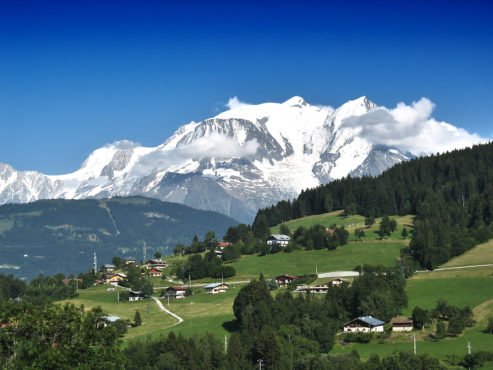10 Most Romantic Places In Italy
10. Mont Blanc, le Monte Bianco, White Mountain
Mont Blanc, the highest peak of the Alps – it is Mont Blanc.
It does not have to be a climber to climb to the top. In the village of La Palud (not far from Courmayeur) is a funicular that takes you to an altitude of 3500 meters.
There is a comfortable observation deck, which offers views of the famous four-thousand’s of Europe.
In a small cafe you can warm up with hot coffee and be sure to capture your kiss in the photo on the background of snow-capped mountains!

Mont Blanc or Monte Bianco, both meaning “White Mountain”, is the highest mountain in the Alps and the highest in Europe after the Caucasus peaks. It rises 4,808 m (15,774 ft) above sea level and is ranked 11th in the world in topographic prominence.
The mountain lies in a range called the Graian Alps, between the regions of Aosta Valley, Italy, and Savoie and Haute-Savoie, France. The location of the summit is on the watershed line between the valleys of Ferret and Veny in Italy and the valleys of Montjoie, and Arve in France. The Mont Blanc massif is popular for mountaineering, hiking, skiing, and snowboarding.
The three towns and their communes which surround Mont Blanc are Courmayeur in Aosta Valley, Italy, and Saint-Gervais-les-Bains and Chamonix in Haute-Savoie, France. The latter town was the site of the first Winter Olympics. A cable car ascends and crosses the mountain range from Courmayeur to Chamonix, through the Col du Géant. Constructed beginning in 1957 and completed in 1965, the 11.6 km (7¼ mi) Mont Blanc Tunnel runs beneath the mountain between these two countries and is one of the major trans-Alpine transport routes.
The first recorded ascent of Mont Blanc was on 8 August 1786 by Jacques Balmat and the doctor Michel Paccard. This climb, initiated by Horace-Bénédict de Saussure, who gave a reward for the successful ascent, traditionally marks the start of modern mountaineering. The first woman to reach the summit was Marie Paradis in 1808, and the first dog without human technical help was “Tschingel” from Grindelwald.